America's 10 least visited national parks
![North Cascades National Park. You'll practically have it to yourself - ([None] (Photographer) - [None]](https://s.yimg.com/ny/api/res/1.2/G61tLzxxZ5bsfD4GXXMmqA--/YXBwaWQ9aGlnaGxhbmRlcjt3PTEyNDI7aD03NzY-/https://media.zenfs.com/en-GB/homerun/the_telegraph_258/458b8f40d88a6b51152d5252f01e82f0)
"Overtourism" has become one of the buzzwords of 2018 - and, in many ways, is very much on-zeitgeist. It sings to that creeping belief that some parts of our planet are now burdened with more visitors than they can cope with - or can cater to at any one time.
It is a term which, perhaps, feels most closely related to the endlessly crowded streets of Barcelona, or the boat-choked canals of Venice. But it might just as easily apply to the USA - to the footfall along Fifth Avenue in New York, through the courtyards of the French Quarter in New Orleans, or across the sands of South Beach in chic Miami.
Not, of course, that America is without corners where you scarcely see another soul. A case in point being its protected spaces. This colossal country is home to 60 national parks. And while some of them are alive with visitors and the click of camera-phones, others are so quiet that the only noise you may hear, besides a rush of water and the rustling of leaves, may be your own voice. Overtourism? Hardly. Tourism? Just about.
So where are these deserted oases? The following feature reveals the 10 least visited US national parks, based on the National Park Service's (nps.gov) visitor figures for 2017 - and explains how, should wanderlust seize you, you can glimpse them yourself.
The bare numbers alone are demonstration of just how far removed from popular perception these places lie. The most visited national park in the USA - Great Smoky Mountains National Park in Tennessee and North Carolina - pulled in a fraction short of 10 million visitors last year. Celebrated enclaves Grand Canyon National Park (in Arizona) and Yosemite National Park (in California) attracted 4.89 million and 3.99 million tourists respectively. By contrast, none of the natural wonders in this list saw more than 125,000 pilgrims in 2017. You can practically enjoy them by yourself.
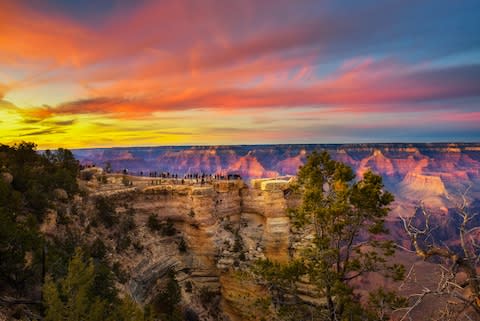
One point of order - this "top ten" contains only national parks within the 50 US states - as opposed to, for example, national monuments or national historic sites. And one point of explanation - five of the ten are unknown to most of the world because they are set in Alaska, the most rugged and out-on-a-limb member of that half-century club. But if you feel like wandering where few others do, any of the 10 will meet you needs.
Kobuk Valley National Park
State: Alaska
Least-visited ranking: First
Visitors in 2017: 9,552
More information: nps.gov/kova
Gates of the Arctic National Park and Preserve
State: Alaska
Least-visited ranking: Second
Visitors in 2017: 11,038
More information: nps.gov/gaar
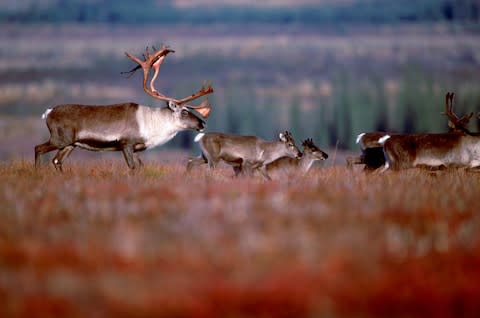
It makes sense to write about the two least-visited US national parks in the same paragraph. Should you have plans to see them, it would be an enormous missed opportunity to make the lengthy journey to take in one, yet fail to admire the other. Kobuk Valley and Gates of the Arctic are neighbours - if such a description does not seem an odd fit with an enclave the size of Alaska, where the house next door may be hundreds of miles away. They stand side by side in the upper reaches of the state, some 700 miles north of Anchorage, Alaska's biggest city. Kobuk Valley is so remote that no roads or facilities exist within it - visitors must bring their own camping or dog-sledding equipment if they want to view the likes of the Great Kobuk Sand Dunes or the swirling eddies of the Kobuk River. Gates of the Arctic is similarly cut off - though the beauty of the Brooks Range is enough to attract the hardiest of hikers.
How to see them
Realistically, you need the assistance of an expert tour operator to venture to the top end of Alaska. Alaska Tours (001 866 317 3325; alaskatours.com) is one such option. It offers breaks to Bettles Lodge, a wilderness retreat which sits just south of Gates of the Arctic. Guests can tailor their trip to fly over both national parks (access to the region is also by air, from Fairbanks). Two-night breaks in summer start at US$1,090 (£850) per person, but the itinerary can be expanded into a five-day tour.
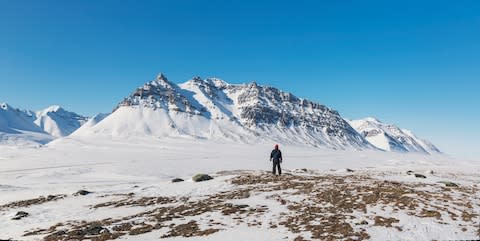
Lake Clark National Park and Preserve
State: Alaska
Least-visited ranking: Third
Visitors in 2017: 13,402
More information: nps.gov/lacl
Katmai National Park and Preserve
State: Alaska
Least-visited ranking: Sixth
Visitors in 2017: 36,825
More information: nps.gov/katm
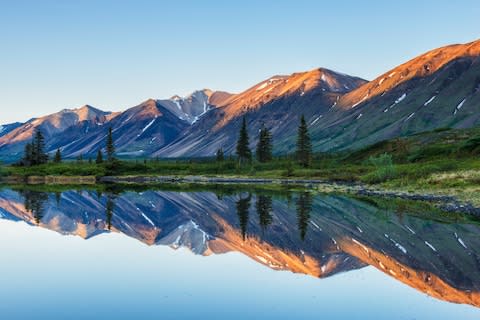
As with the wilderness twins of northern Alaska, it seems reasonable to treat Lake Clark and Katmai as two halves of the same craggy coin. They too are (relative) neighbours, pitched in the south of the state, a reasonable distance from Anchorage (about 200 miles away). Not that this makes for anything as rudimentary as road access - in each case, you need a boat or a plane to make an entrance. As its name suggests, Lake Clark National Park and Preserve fans out around a vast water feature, though it also encompasses glaciers, patches of alpine tundra, rivers rich in leaping salmon - and, in Mounts Redoubt and Iliamna, two massive stratovolcanoes (the former is active, and last erupted in 2009). Cast adrift to the south-west, Katmai National Park and Preserve fringes the chill waters of the Shelikof Strait and the Gulf of Alaska. It too is known for its volcanoes - the titular Mount Katmai is also active, though has not thrown a temper tantrum since 1912 - as well as its healthy population of brown bears.
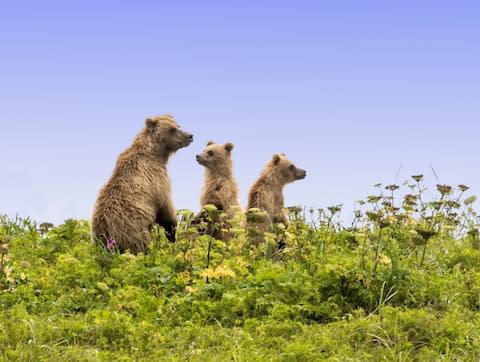
How to see them
Again, it makes sense to arrange a trip that pulls the two national parks into one itinerary. Again, finding a specialist is a wise course of action. Alaska Collection (001 800 808 8068; alaskacollection.com) offers "Into The Wild" - a six-day odyssey that ticks off Lake Clark National Park and Preserve (as well as Kenai Fjords National Park, an Alaskan enclave which, with 291,727 visitors in 2017, almost counts as "well-known"). From $3,294 (£2,567) a head. This could be combined with the same firm's "Katmai National Park Bear Viewing" day-trip, which nips in and out of Anchorage. From $895 (£697) per person. Neither price includes international flights.
Isle Royale National Park
State: Michigan
Least-visited ranking: Fourth
Visitors in 2017: 17,792
More information: nps.gov/isro
As with the protected behemoths of the Alaskan wilderness, Isle Royale National Park cannot be reached by road - albeit for the simple reason that it is an island, adrift in Lake Superior. Seek it on the map and it almost hides from your gaze. Officially it is part of Michigan. But it lies closer to the lakeshore of Minnesota than it does to its home state - and closer still to the US-Canadian border, which runs across what is the largest of the Great Lakes just north of this awkward Avalon. The easiest point of access - by ferry - is the dockside at Grand Portage in Minnesota, although you can also catch boats across from Houghton and Copper Harbour in Michigan. These carry you to a nugget of pristine terrain that has been safeguarded as a a Unesco International Biosphere Reserve since 1980. There are wilderness campsites, winding trails and opportunities for canoeing and kayaking - but little which reflects 21st century life.
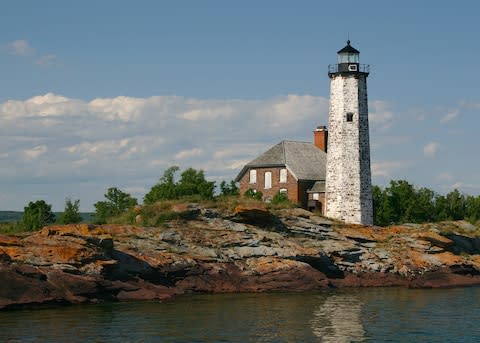
How to do it
A trip to Isle Royale could be built into one of North America's great (though often under-appreciated) road trips - the "Circle Tour" around Lake Superior (superiorcircletour.com), which rolls through the Canadian province of Ontario as well as Minnesota and Michigan. A week's car hire, picking up and dropping off at Minneapolis-St Paul Airport, costs from about £189 via RentalCars.com. Delta Air Lines (0871 221 1222; delta.com) flies direct to Minneapolis-St Paul from Heathrow.
North Cascades National Park
State: Washington
Least-visited ranking: Fifth
Visitors in 2017: 24,164
More information: nps.gov/noca
Compared to the outposts of Alaska, North Cascades National Park is remarkably accessible - it lies "just" 120 miles north-east of Seattle, and can be reached along the major thoroughfare that is Washington State Route 20. But any hint of the road well travelled evaporates as soon as you leave the tarmac. The park frames a large portion of the North Cascades, a swarthy expanse of stone and ice that pays no heed to international borders, swarming north into Canada and British Columbia. Goode Mountain is a case in point - the park's highest point, rearing to an altitude of 9,220ft (2,810m). Visitors are asked to leave no trace of their presence. Camping is via a strictly regulated permit system, and mountaineers are required to use minimal equipment to limit rock damage.
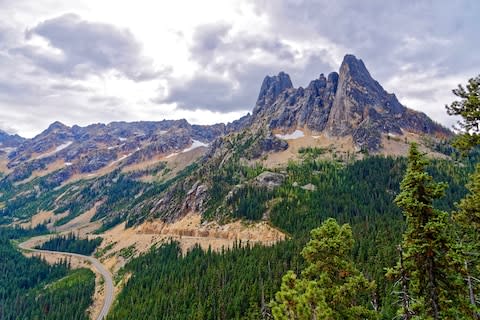
How to see it
Companies which sell road trips in Washington tend to focus their attention on Seattle and Olympic National Park to the west - so the best bet may be to rent a set of wheels and plot your own course. A basic package of air fare (direct flights from Heathrow to Seattle on May 11 next year) and seven days' car hire costs from £531 per person via British Airways Holidays (0344 493 0787; ba.com/holidays).
Dry Tortugas National Park
State: Florida
Least-visited ranking: Seventh
Visitors in 2017: 62,764
More information: nps.gov/drto
If it sounds remarkable that one of America's ten least visited national parks could be found in a state as popular as Florida, then a quick glance at the map will explain the attention deficit. The Dry Tortugas are the outermost endgame of the Florida Keys, stranded in the Gulf of Mexico, some 70 miles west of Key West. Seven main islands are included in the national park - including Garden Key, on which the staunch bastion of Fort Jefferson stands. Staunch, that is, up to a point. Construction began in 1846 - but this six-sided brick guardian was, technically, never completed. For all this, it looks remarkable, seeming to hover on the surface of the sea, calling to the cameras of those who make the crossing from Key West. The isles are also great for snorkelling.
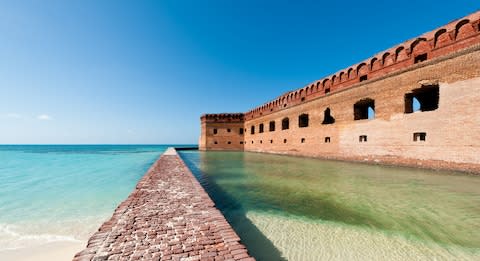
How to see it
You can hop across from Key West on the catamaran Yankee Freedom III (drytortugas.com; day trips $180/£140). America As You Like It (020 8742 8299; americaasyoulikeit.com) sells a 21-night "Florida Discovery" road trip which spends two days at Key West. From £1,259 per person, including flights, hotels and car rental.
Wrangell–St Elias National Park and Preserve
State: Alaska
Least-visited ranking: Eighth
Visitors in 2017: 72,362
More information: nps.gov/drto
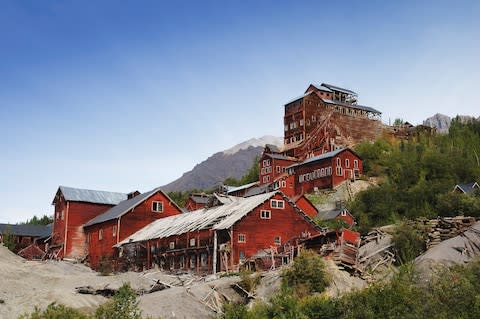
It's back to Alaska for another entry in the annals of America's least-visited. That said, compared to Gates of the Arctic, Wrangell–St Elias National Park and Preserve is practically a service station in the middle of the beaten path - it is at least accessible by road from Anchorage (an eastbound drive of 250 miles). It is also a geographical titan - at 20,587 square miles, it is the largest entity managed by the National Park Service (six times bigger than Yellowstone National Park). It could be considered larger still by dint of the fact that is is contiguous with its compatriot Glacier Bay National Park and Preserve, and its Canadian cousins Tatshenshini-Alsek Provincial Park and Kluane National Park and Reserve. And it is remarkable for both the size of its mountains and their proximity to the sea. Its highest point is the summit of Mount Saint Elias, at 18,008ft (5,489m), which straddles the international border within sight of the Pacific.
How to see it
The park features in the 13-day "Highlights of Alaska" break sold by Wexas Travel (020 7590 0636; wexas.com). From £3,290 a head, including flights.
Great Basin National Park
State: Nevada
Least-visited ranking: Ninth
Visitors in 2017: 105,880
More information: nps.gov/grba
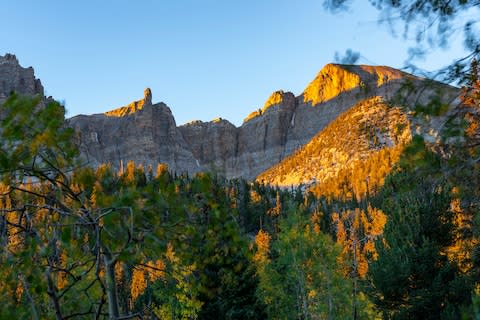
Tucked into the far east of Nevada, almost at the point where the state rubs up against neighbouring Utah, Great Basin deals in just the sort of serrated scenery that usually attracts travellers to the American West. So perhaps it is the relative proximity of better known pockets of geological wonder - Grand Canyon National Park; Monument Valley in Arizona and Utah - which explains the lack of appreciation for this place of dust and drama. So-named because it forms part of the Great Basin between the Sierra Nevada and the Wasatch Mountains, it reaches for the skies in the form of the 13,063ft (3,982m) Wheeler Peak (where the Wheeler Peak Glacier clings to existence in a fast-warming world), and falls into the earth where the Lehman Caves vanish underground.
How to see it
The park appears on the "Neon, Nature and National Parks" fly-drive jaunt through Utah, Nevada and California offered by Bon Voyage (0800 316 3012; bon-voyage.co.uk) - from £2,159 per person, including flights, hotels and car rental.
Congaree National Park
State: South Carolina
Least-visited ranking: Tenth
Visitors in 2017: 121,036
More information: nps.gov/cong
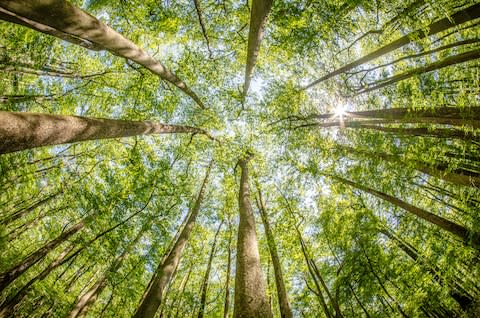
Novelty value may explain Congaree National Park's presence in this list - it has only held this status since 2003. Bordered by the Congaree River as it meanders south-east towards the Atlantic, this little enclave protects a sizeable tranche of virgin hardwood forest - now hugely rare in the USA. It is primarily a haven for hikers, although kayakers can also take to the waters of Cedar Creek for mornings of peaceful paddling.
How to see it
The park lies 100 miles north-west of Charleston - one of the main stops on the 14-night "Georgia, Carolinas and The Great Smoky Mountains" road-trip odyssey sold by Complete North America (0115 961 0590; completenorthamerica.com). From £2,999 a head, including flights, hotels and car hire.

